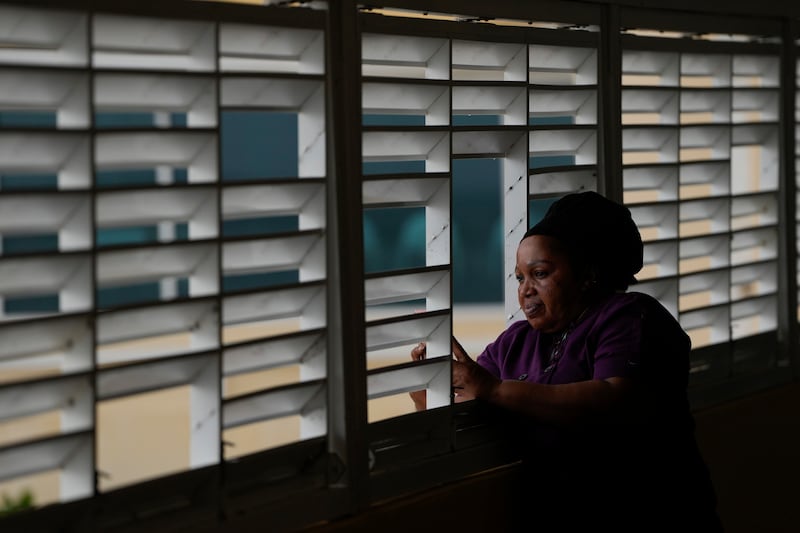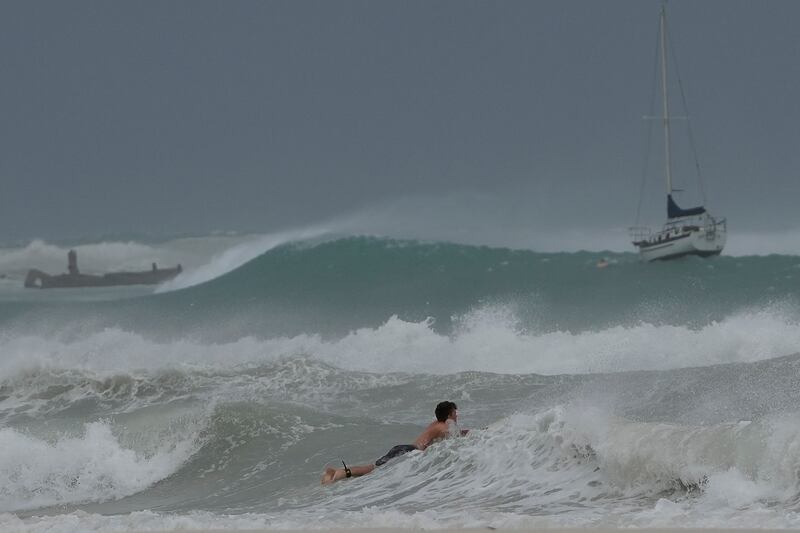Hurricane Beryl strengthened to Category 5 status late on Monday after it ripped doors, windows and roofs off homes across the southeastern Caribbean with devastating winds and storm surge fuelled by the Atlantic’s record warmth.
Beryl made landfall on the island of Carriacou in Grenada as the earliest Category 4 storm in the Atlantic, then late in the day the National Hurricane Centre in Miami said its winds had increased to Category 5 strength.
Fluctuations in strength, and later a significant weakening, were forecast as the storm pushes further into the Caribbean in the coming days.
Grenada’s prime minister Dickon Mitchell said one person had died and he could not yet say if there were other fatalities because authorities had not been able to assess the situation on the islands of Carriacou and Petite Martinique, where there were initial reports of major damage but communications were largely down.
Last stop before the front line: eastern town on edge as Ukraine’s defences creak
Social media successes and pitfalls live side by side in China too
Landmark Japanese documentary on rape was nominated for an Oscar, but may never be widely seen there
Trump’s opening gambit to end war shakes Ukraine and stirs Russia
“We do hope there aren’t any other fatalities or any injuries,” he said.
“But bear in mind the challenge we have in Carriacou and Petite Martinique.”
Mr Mitchell said the government will send people first thing on Tuesday morning to evaluate the situation on the islands.
Streets from St Lucia island south to Grenada were strewn with shoes, trees, downed power lines and other debris.
Banana trees were snapped in half and cows lay dead in green pastures with homes made of tin and plywood tilting precariously nearby.

“Right now, I’m real heartbroken,” said Vichelle Clark King as she surveyed her damaged shop in the Barbadian capital of Bridgetown that was filled with sand and water.
Beryl was still swiping the southeast Caribbean early on Tuesday on a track heading just south of Jamaica and toward Mexico’s Yucatan Peninsula by late Thursday as a Category 1 storm.
It reached Category 5 strength late on Monday and intensified further early on Tuesday morning to 265km/h winds.
Beryl was about 716km (445 miles) east-southeast of Isla Beata in the Dominican Republic and was moving west-northwest at 35km/h.
A hurricane warning was in effect for Jamaica, and a tropical storm warning for the southern coast of Hispaniola, the island shared by Haiti and the Dominican Republic.
Fluctuations were likely but Beryl was expected to stay near major hurricane intensity as it moved into the central Caribbean and passed near Jamaica on Wednesday, the National Hurricane Centre said.

After that, significant weakening was expected.
The last strong hurricane to hit the southeast Caribbean was Hurricane Ivan 20 years ago, which killed dozens of people in Grenada.
On Monday afternoon, officials received “reports of devastation” from Carriacou and surrounding islands, said Terence Walters, Grenada’s national disaster coordinator.
Mr Mitchell said he would travel to Carriacou as soon as it’s safe, noting there has been an “extensive” storm surge.
Grenada officials had to evacuate patients to a lower floor after hospital roof was damaged, he said.
“There is the likelihood of even greater damage,” he told reporters. “We have no choice but to continue to pray.”

In Barbados, Wilfred Abrahams, minister of home affairs and information, said drones – which are faster than crews fanning across the island – would assess damage once Beryl passed.
Jaswinderpal Parmar of Fresno, California, who was among the thousands who travelled to Barbados for Saturday’s Twenty20 World Cup cricket final, said he and his family were now stuck there with scores of other fans after their flights cancelled on Sunday.
He said by phone that it is the first time he has experienced a hurricane – he and his family have been praying, as well as taking calls from concerned friends and family as far away as India.
“We couldn’t sleep last night,” Mr Parmar said. -AP













